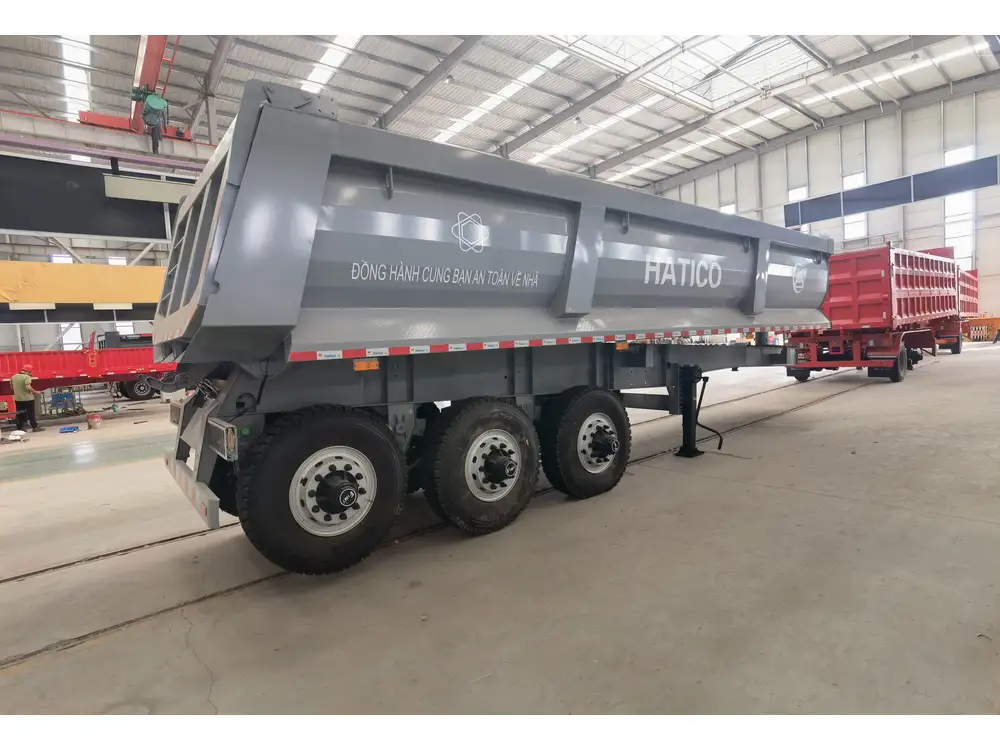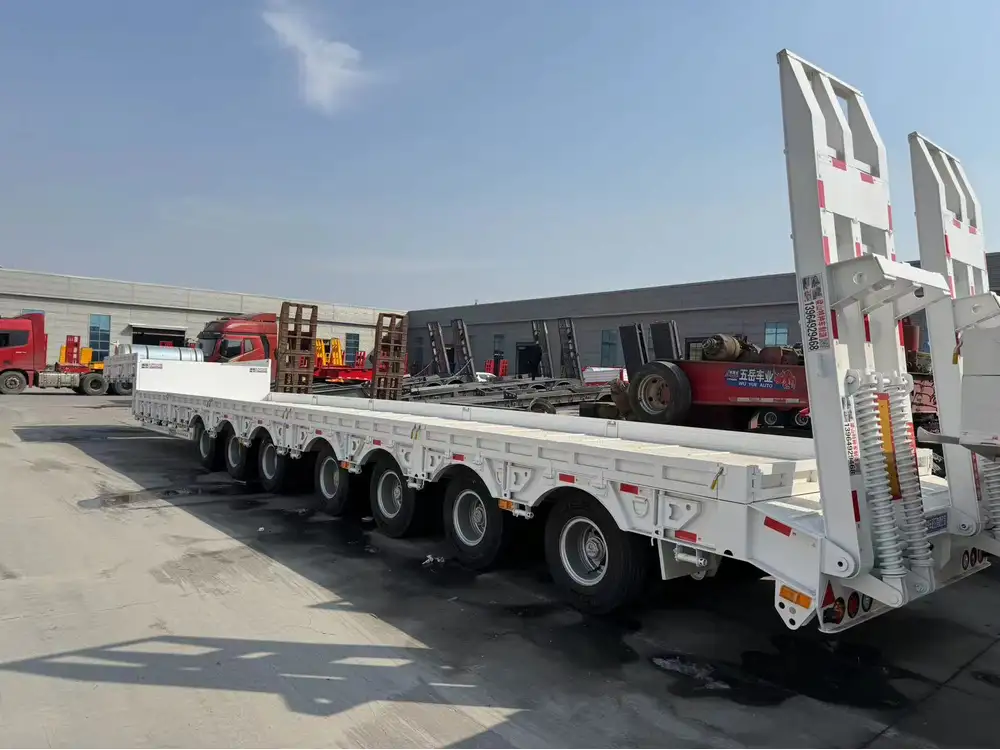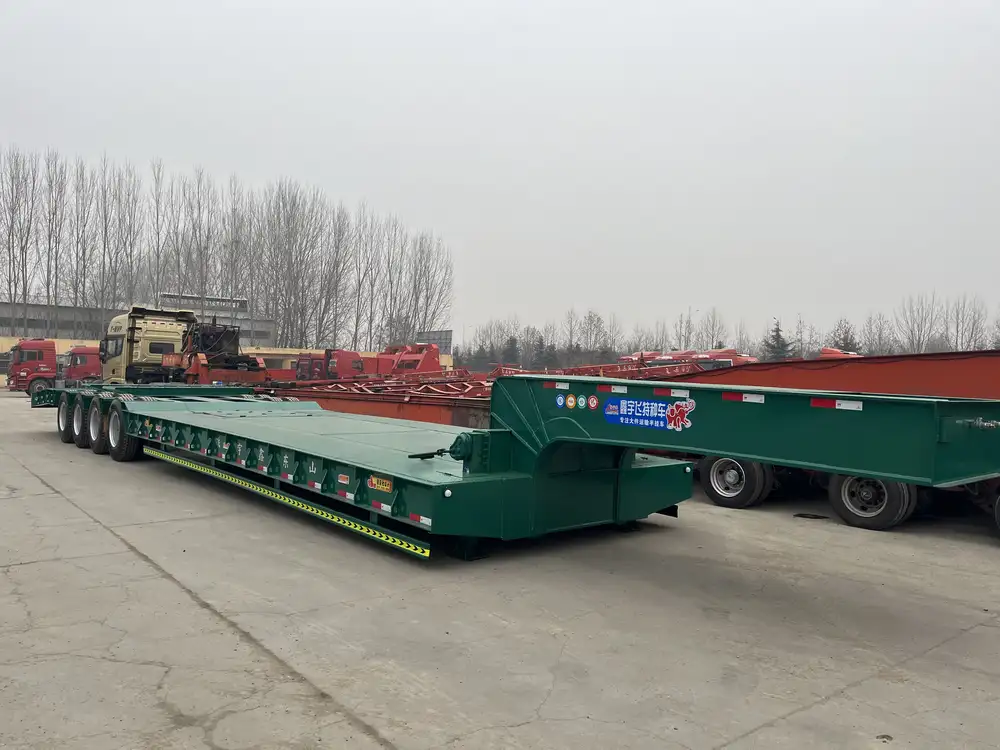As the demand for efficient logistics and transportation continues to surge, ensuring the reliability of your semi trailers has become paramount. One critical aspect of maintaining these large vehicles is understanding how to backup a semi trailer correctly. A well-structured backup procedure not only safeguards the integrity of the vehicle but also enhances safety on the road. This guide aims to provide an in-depth analysis of effective backing techniques for semi trailers, supported by detailed steps, practical tips, and common pitfalls to avoid.
Understanding the Importance of Proper Backup Techniques
Backing up a semi trailer is not merely about maneuvering a massive vehicle into a tight spot; it encompasses a broader understanding of spatial awareness, vehicle size, and road conditions. Properly executing a backup contributes to:
- Safety: Reducing the risk of accidents.
- Protection: Preventing damage to the trailer and surrounding property.
- Efficiency: Streamlining loading and unloading processes.
- Skill Development: Enhancing driver competence and confidence.
Key Elements to Consider Before Backing Up

Vehicle Awareness
Before initiating the backup process, it’s crucial to familiarize yourself with the dimensions of your semi trailer. Consider the following:
| Aspect | Details |
|---|---|
| Length | Typical semi trailers range from 48 to 53 feet. |
| Width | Generally about 8.5 feet wide. |
| Height | Varies, usually around 13.5 feet including the load. |
| Weight | Maximum gross vehicle weight can be up to 80,000 lbs. |
Surrounding Environment
Evaluate the area where you plan to back up:
- Obstacles: Identify any barriers such as poles, trees, or other vehicles.
- Environmental Conditions: Consider road conditions, weather, and lighting that may affect visibility and handling.
Trailer Configuration
Check the configuration and setup of your semi trailer:
- Type of Load: Different loads can affect handling, balance, and visibility.
- Trailer Type: Flatbeds, reefers, and dry vans have unique characteristics that influence backing maneuvers.

Step-by-Step Backup Procedure for Semi Trailers
Step 1: Positioning the Vehicle
Before you begin to back up, position your semi trailer at a suitable distance from the docking point. Here are the key components to consider:
- Alignment: Ensure the tractor-trailer combination is aligned parallel to the designated area.
- Clearance: Maintain enough space to allow for an effective swing of the trailer without colliding with obstacles.
Step 2: Using Mirrors Effectively
Mirrors are essential for monitoring the position of the trailer relative to surroundings:
- Adjust Mirrors: Ensure both side mirrors are properly adjusted to give you a comprehensive view of your environment.
- Check Blind Spots: Visually scan each side before starting your maneuver.

Step 3: Engaging Reverse Gear
Once you’ve cleared the area of obstacles and secured proper mirror visibility:
- Shift to Reverse: Slowly shift the vehicle into reverse gear while keeping your foot on the brake.
- Set the Speed: Use minimal throttle to maintain control over the trailer as it begins to move backward.
Step 4: Executing the Backup
As you initiate the backup:
- Steer Gently: Turn the steering wheel gradually in the desired direction.
- Counter-Swing: Remember that the back of the trailer will initially go in the opposite direction of the turn. A common rule is to turn the steering wheel towards the direction you want the trailer to go.
- Use a Spotter: When available, have a spotter assist by using hand signals to guide you.
Step 5: Fine-Tuning the Maneuver
As the trailer begins to swing, regularly check your mirrors:
- Adjust Angles: Make small, deliberate turns of the steering wheel to align the trailer with the docking point.
- Stay Mindful of Distance: Continuously assess how close the trailer is to obstacles or docks.

Step 6: Completing the Maneuver
Once you have successfully backed into position:
- Straighten the Trailer: Before coming to a complete stop, straighten the steering wheel to align the truck and trailer.
- Bring the Vehicle to a Stop: Gradually decelerate and bring the vehicle into a complete stop.
- Verify Alignment: Check your position to ensure proper alignment with loading docks or parking spaces.
Common Mistakes to Avoid When Backing Up a Semi Trailer
As with any skill, avoiding common pitfalls can save time and prevent unnecessary complications. Here are several mistakes to avoid:
| Mistake | Description |
|---|---|
| Lack of Safety Checks | Failing to check surroundings for hazards can lead to accidents. |
| Oversteering | Excessive wheel movements can result in loss of control. |
| Ignoring Blind Spots | Not accounting for blind spots can cause collisions. |
| Rushing the Process | Taking your time is vital for safety and control. |
| Neglecting Communication | Not using a spotter or appropriate hand signals can lead to confusion. |
Tips for Enhancing Your Backing Skills

Practice Makes Perfect
Backing a semi trailer is akin to mastering a fine art; the more you practice, the better you’ll become. Dedicate time in a safe, empty area or training facility.
Utilize Technology
- Backup Cameras: Investing in backup cameras can provide an additional perspective, facilitating easier maneuvers.
- Proximity Sensors: Sensors can alert you to nearby obstacles, allowing for rapid correction.
Take a Defensive Approach
Always expect the unexpected. Stay alert for other vehicles, pedestrians, or sudden changes in your environment, and be prepared to adjust your maneuvers accordingly.

Conclusion
Mastering how to backup a semi trailer involves a complex interplay of awareness, technique, and practice. From understanding vehicle dimensions and surroundings to implementing structured backing procedures, each facet plays a crucial role in ensuring safety and efficiency.
By following the detailed steps outlined in this guide and being mindful of the potential pitfalls, you can navigate the challenges of backing a semi trailer with confidence. Whether you’re a seasoned driver or a novice, applying these techniques will undoubtedly enhance your skill set and optimize your operations.
Additional Resources
For those looking to further enhance their backing skills, consider the following resources:
- Training Programs: Specialized training programs focused on truck driving and logistics.
- Driving Simulators: Utilizing simulators for practicing backing techniques in a controlled environment.
- Professional Guidance: Hiring a mentor or instructor to provide tailored feedback and advanced techniques.
Adopting these practices and learning resources will not only bolster your capabilities but will also contribute positively to your professional reputation in the logistics industry.



